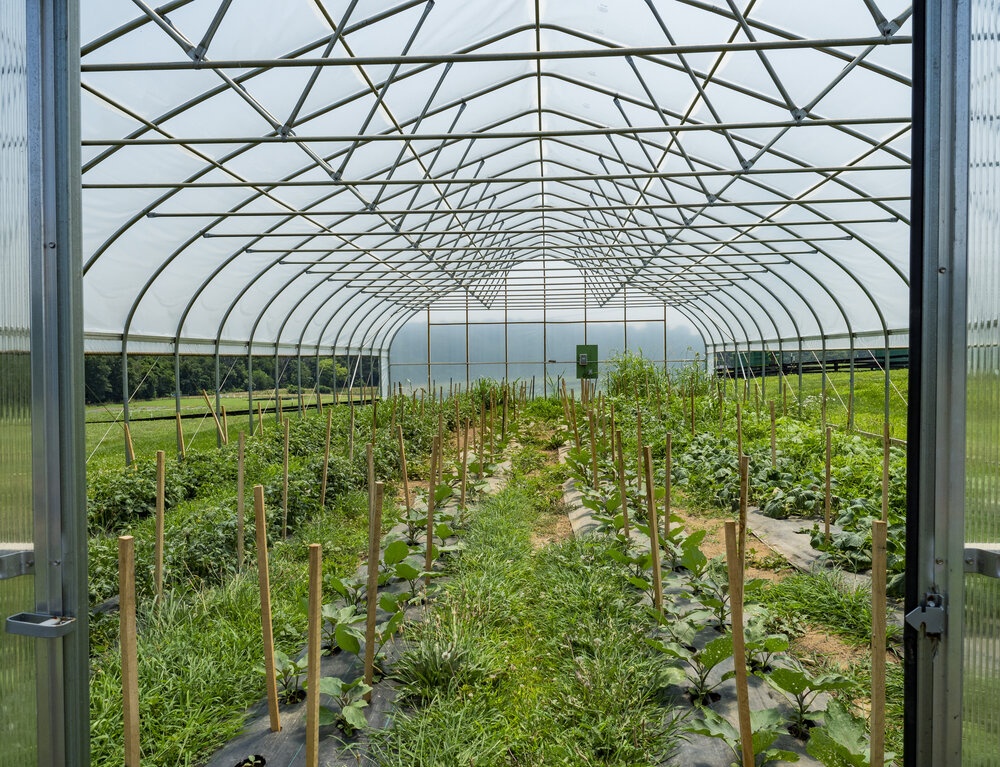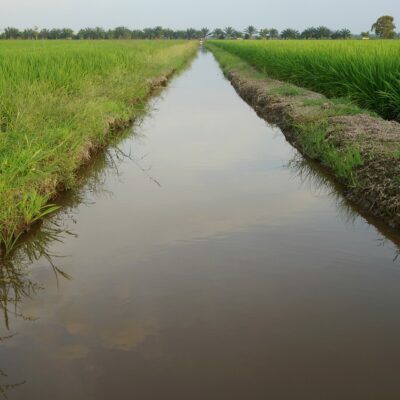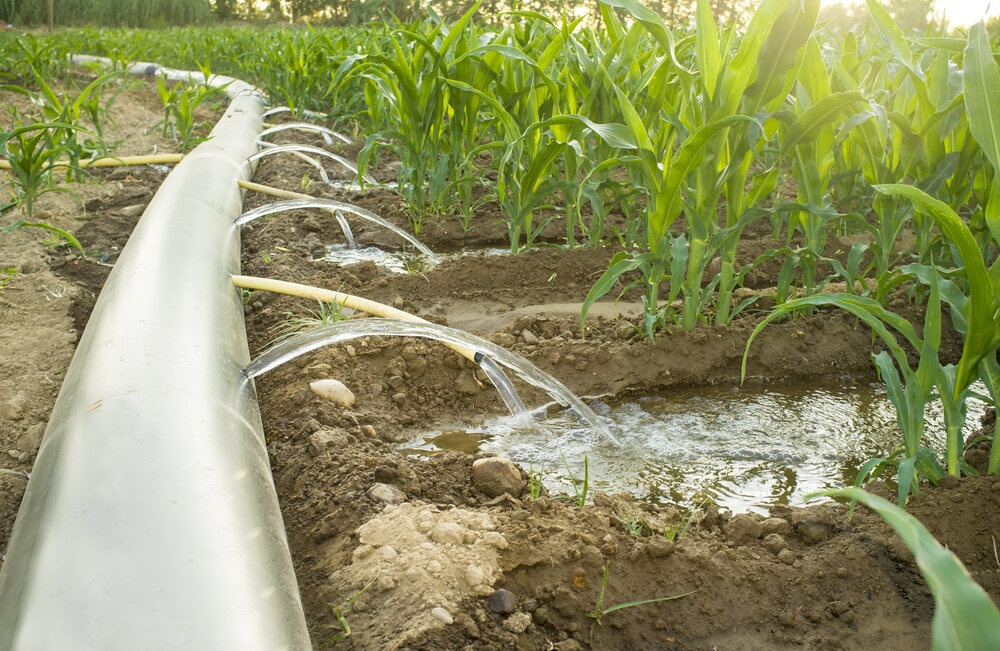If you are a keen gardener, you enjoy growing fruit and vegetables, and you are searching for ways of improving your harvest, a polytunnel could be the answer. Polytunnels work on a similar principle to greenhouses - to provide cover from extreme weather conditions and minimise damage from pests. They are also a great way of extending the growing season.
Once installed, polytunnels, or rather the plants within them, require irrigation, and this is what this article is all about. But first, let's take a look at what a typical polytunnel is.
What are Polytunnels?
Polytunnels are a budget-friendly method of increasing the yield of fruit and vegetable plants. They are constructed using galvanised steel hoops which are then tightly covered over with clear or sometimes diffused plastic sheeting.
The big advantage that polytunnels have over greenhouses is that they are considerably cheaper (around only one-third of the cost of a greenhouse) and easier to construct or install.
Polytunnels don't have any sort of base, unlike greenhouses, and are usually installed straight over the soil. This makes them not only easy to install but simple to dismantle too. A typical galvanised steel frame will be good for 20 years or longer. The plastic or polyethene covering will require replacing every seven to ten years.
Polytunnels kits come with a complete range of components and accessories which allow you to construct purpose-built protection to suit your garden shape and size and the type of plants you will be growing.
Large Polytunnels
People often tend to think of polytunnels as being quite small. However, they can be seriously large - up to 30 feet wide. These polytunnel kits incorporate hoops made from 50mm diameter galvanised steel and come with corner stabilisers, foundation tubes, hoops, roof ridges, and stabilisers.
They are available from many suppliers and are supplied complete with timber door frames and large double hinged doors. They can come with thermal anti-drip polythene covers that are 20% thicker than most other covers and have a 5-year anti-UV degradation guarantee.
Polytunnel Irrigation - Hand Watering is Out of the Question
Whether you are looking at polytunnels for personal or commercial reasons, one of the most important factors you will need to consider is polytunnel irrigation. If you are thinking about growing a variety of crops in your tunnels, it is key.
Watering by hand is not really an option. You would have to remove the plastic covering, apply water, then refix the plastic back in position. It would make the watering process even longer.
Installing an automated irrigation system is important. It will not only make watering so much faster, with the right configuration, you can also ensure that the different plants get the water they require as and when they need it.
Various Types of Polytunnel Irrigation
Some gardeners prefer overhead watering systems for larger polytunnels. You can, for example, purchase overhead sprinkler irrigation kits from companies like Northern Polytunnels to suit 16 feet wide units.
The company describes the irrigation these systems provide as being like light rainfall. The only real downside is that this type of watering is susceptible to evaporation. There is also the fact that sprinkling water is quite wasteful because it distributes water indiscriminately. It waters unplanted as well as planted soil.
Drip Irrigation for Polytunnels
Drip-type irrigation is much much efficient. The point of delivery is immediately on top of the soil or just below the surface, meaning there is far less loss in terms of evaporation. And instead of being indiscriminately spread, it is slightly better targeted.
Soaker hoses are significantly more efficient than sprinklers, but drip irrigation, even more so. With a drip irrigation system, you can position the drippers where they are most effective. A soaker hose has the advantage that it is quick and simple to install, but a well-designed drip irrigation system delivers water where it is needed - to the root systems of the plants.
Why Your Polytunnel Irrigation System Should Include a Timer
Unless you water the plants in your polytunnel evenly, it will put them under strain and can lead to things like bolting (running to seed pop), roots becoming woody, or splitting - as with carrots and tomatoes. Watering is often one of those chores that can be a little patchy, particularly when you are busy and don't have time to dedicate to doing it properly.
Another problem, as touched on before, is that water evaporates rapidly from the surface of the soil, particularly in hot weather. It could mean that your plants are getting less water at the root system than you think.
One of the most important things with polytunnel growing is doing the watering evenly, which is why including a timer in your irrigation system set-up is key.
I can think of five good reasons for installing a water timer.
- It will save you a considerable amount of time.
- It will increase the efficiency of your drip system, delivering water to the plants' root systems.
- You can set the timer to water early in the morning while it is still cool, giving the water a better chance of soaking into the soil rather than evaporating.
- With the right time set-up, your drip irrigation system will deliver precisely the amount of water the plants need, and you will get even irrigation rather than the uneven watering you get when you do the chore by hand.
- Last but by no means least - you can go on holiday without fear of returning to over-watered, under-watered, or dead plants.
Installing a polytunnel irrigation system might at first seem a little complicated, but in actual fact, it's quite easy to do. You don't need any special tools. All you need is a Stanley knife with which to cut the pipe. When you buy an irrigation system in kit form, it all just slots together and gets tightened by hand.
The place to start is at the water supply end. This is where the timer gets fitted. You can add a filter if you deem it necessary. The water then gets carried from the source to the watering area via the pipe, along which you can install as many drip lines as you desire to send the water in any direction you choose using the various T-pieces, connectors and elbows supplied in the kit.
Automating your polytunnel irrigation in this way not only means delivering the consistent watering that your plants require, but it will also make your life a heck of a lot easier.


